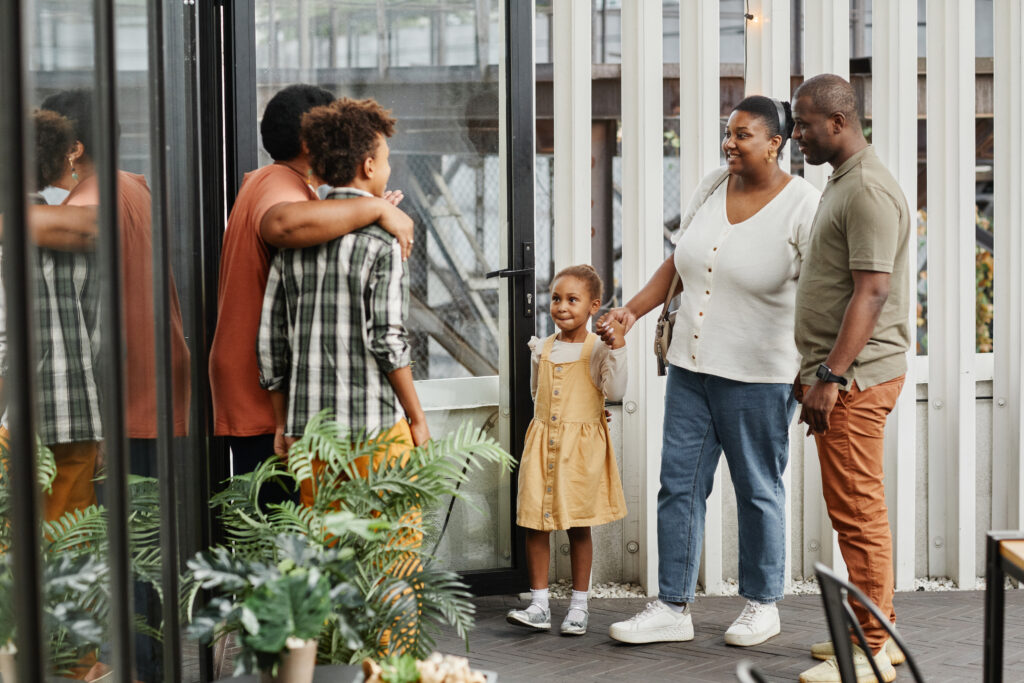Small Talk in a World of Text

Small talk may sound easy enough, but it is a challenge for many adults, let alone children who grow up in a world of texting and social media. Teaching your child to engage in small talk makes them more socially aware and helps them communicate across generations. Use some of the following ideas to begin teaching your child to engage in small talk.
Meet and greet. Firstly, walk around your neighborhood and greet familiar neighbors. Begin with a simple hi/hello and introduce yourself and your child. When your child becomes comfortable with this, have them introduce themselves. From there, expand their small talk using some of the following ideas.
People watch. Sit and watch people in parks, on the sidewalk, shopping, whatever is available in your community. Guess at what the people may be interested in, how they might relate to their communication partner, and what their facial expression/body language may indicate.
Car talk. Practice small talk in the car where eye contact and body language require less attention. Practice longer topics while driving.
Small Talk Topic List
Brain storm a list of topics with your child. Small talk is a brief interaction so keep the topics brief. Some examples are the weather, the dog they may be walking, bicycle they are riding, how they are enjoying the day, what they may be doing at the moment. Prepare a few questions and practice them when greeting neighbors as above, and depending on your child, you may wish to make a list of topics NOT to use.
Wh-questions. Teach your child to use who, what, where, when, why questions vs. yes/no questions. For example, when meeting a dog walker ask, “Where does your dog like to go?” or “What does your dog like to play?” rather than “Are you walking your dog?” or “Does your dog like to play?”
Share. Teach your child to share something about themselves. It may be a new sport they are starting, a favorite game, book or movie. Provide guidance about topics that are and are not appropriate.
Holidays. Role play questions to ask grandparents, aunts, uncles, and adult friends. Give your child a little background information on each person who is likely to be present, such as a grandparent’s favorite old movie, aunt’s pet, friend’s new car, etc.
Remember to end it well. Give your child some standard phrases to exit the conversation. Phrases could be, “It was nice to meet you.”, “Enjoy the rest of of your day”, “Hope to see you again”, etc.
Check out MOSAIC’s blog to learn more about topics related to your child’s development.
